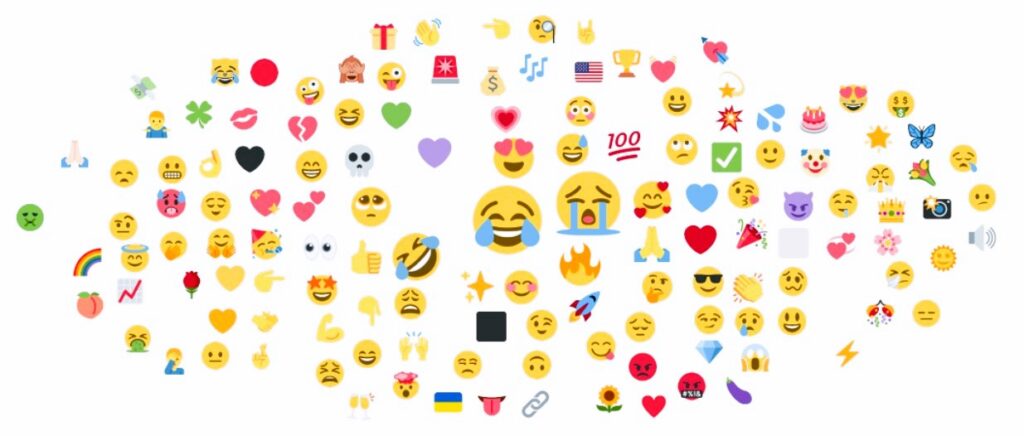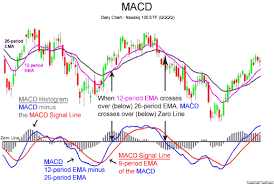Express your emotions with ease! Learn the meaning behind the top 100 emojis and communicate better in the digital world.
In the digital world, text messages, emails, and social media posts have become the primary medium of communication. Emojis have revolutionized the way we express our emotions online, and they have become an essential part of digital communication. An emoji can convey a message, a feeling, or an emotion that words cannot express. In this guide, we will explore the 50 most popular emojis, learn their meanings, and understand how to use them effectively.
1. Introduction
Emojis have become a global phenomenon in recent years, with people of all ages using them to express their emotions online. Emojis are small digital images or icons that represent an idea, emotion, or object. They were first created in the late 1990s in Japan, and they quickly gained popularity worldwide. Today, emojis are used by millions of people across the world and are an essential part of digital communication.
2. What are Emojis?
Emojis are small images or icons that represent an idea, emotion, or object. They are often used to convey a message or emotion that words alone cannot express. Emojis are widely used in digital communication, including text messages, emails, and social media posts.
3. The Evolution of Emojis
Emojis have come a long way since their inception in the late 1990s. The first set of emojis was created by Shigetaka Kurita, a Japanese designer, in 1999. The first set consisted of 176 emojis and was created for the Japanese mobile operator NTT DoCoMo. These early emojis were simple and pixelated and were only available in Japan.
Over the years, emojis have evolved, and today they are available in various styles and designs. Emojis are now available in different skin tones, and new emojis are added regularly to reflect changes in society and culture.
4. Why are Emojis Important?
Emojis are essential because they help to convey emotions and feelings in digital communication. They can help to clarify the tone of a message and ensure that the recipient understands the intended message. Emojis also help to add personality and emotion to messages, making them more engaging and entertaining.
5. How to Use Emojis
Using emojis is simple and can add a touch of personality and emotion to your messages or social media posts. Here are some tips on how to use emojis effectively:
- Use emojis sparingly: Don’t overuse emojis, as this can make your message appear unprofessional or juvenile. Use them selectively to emphasize a point or convey an emotion.
- Choose the right emoji: Make sure the emoji you choose accurately represents the emotion or message you are trying to convey. Using an inappropriate emoji can lead to confusion or misinterpretation.
- Combine emojis: You can create unique and fun combinations of emojis to express complex emotions or ideas. For example, a heart and a smiley face can convey love and happiness.
- Use emojis in context: Emojis can enhance your message, but they should be used in the right context. Using a laughing emoji in a serious message can come across as insincere.
- Know your audience: Be aware of who you are communicating with and adjust your use of emojis accordingly. Using too many emojis may be appropriate in a casual conversation with friends but not in a professional email.
By following these tips, you can effectively use emojis to enhance your messages and convey your intended emotions.
| Emoji | Name | Meaning |
|---|---|---|
| 😐 | Neutral Face | Neutral, irritated, or unamused |
| 😒 | Unamused Face | Annoyed, skeptic, or irritated |
| 😕 | Confused Face | Confused or unsure |
| 😅 | Smiling Face with Open Mouth and Cold Sweat | Relief, nerves, or excitement |
| 😆 | Smiling Face with Open Mouth and Tightly-Closed Eyes | Great excitement or happiness |
| 😂 | Face with Tears of Joy | Extreme happiness or laughter |
| 🤣 | Rolling on the Floor Laughing | Intense or hysterical laughter |
| 😇 | Smiling Face with Halo | Innocence or goodness |
| 🙂 | Slightly Smiling Face | Happy, but often used ironically |
| 😊 | Smiling Face with Smiling Eyes | Positive or happy |
| 😋 | Face Savoring Delicious Food | Cheeky, poking fun, or enjoying food |
| 😌 | Relieved Face | Content or calm |
| 😍 | Smiling Face with Heart-Eyes | Love or adoration |
| 😎 | Smiling Face with Sunglasses | Cool or confident |
| 😏 | Smirking Face | Mischievous or flirting |
| 😐 | Neutral Face | Neutral, irritated, or unamused |
| 😒 | Unamused Face | Annoyed, skeptic, or irritated |
| 😔 | Pensive Face | Reflective or remorseful |
| 😕 | Confused Face | Confused or unsure |
| 😖 | Confounded Face | Horrified or disgusted |
| 😗 | Kissing Face | Affectionate or whistling |
| 😘 | Face Throwing a Kiss | Kissing someone, or general expression of love |
| 😙 | Kissing Face with Smiling Eyes | Whistling or kissing with a smiling face |
| 😚 | Kissing Face with Closed Eyes | Kissing with closed eyes |
| 😛 | Face with Stuck-Out Tongue | Playful or teasing |
| 😜 | Face with Stuck-Out Tongue and Winking Eye | Fun, joking, or cheeky |
| 😝 | Face with Stuck-Out Tongue and Tightly-Closed Eyes | Playful or jokingly disgusted |
| 😞 | Disappointed Face | Sad or disappointed |
| 😟 | Worried Face | Worried or troubled |
| 😠 | Angry Face | Angry or annoyed |
| 😡 | Pouting Face | Annoyed or angry |
| 😢 | Crying Face | Upset or in pain |
| 😣 | Persevering Face | Persevering or in pain |
| 😤 | Face with Steam From Nose | Frustrated or annoyed |
| 😥 | Sad but Relieved Face | Sad but relieved |
| 😦 | Frowning Face with Open Mouth | Shocked or surprised |
| 😧 | Anguished Face | Anguished or concerned |
| 😨 | Fearful Face |
| Emoji | Name | Meaning | Category |
|---|---|---|---|
| 😂 | Face with Tears of Joy | Extreme happiness or laughter | Smileys & Emotion |
| ❤️ | Red Heart | Love (red by default, but meaning is same for any color) | Smileys & Emotion |
| 🤣 | Rolling on the Floor Laughing | Intense or hysterical laughter | Smileys & Emotion |
| 👍 | Thumbs Up Sign | Well done, good job, or approval | People & Body |
| 😭 | Loudly Crying Face | Uncontrollable tears, perhaps due to sadness or joy | Smileys & Emotion |
| 🙏 | Person with Folded Hands | Prayer, thank you, and sometimes a high five | Smileys & Emotion |
| 😘 | Face Throwing a Kiss | Kissing someone, or general expression of love | Smileys & Emotion |
| 🥰 | Smiling Face with Hearts | Love or affection | Smileys & Emotion |
| 😍 | Smiling Face with Heart-Eyes | Love or adoration | Smileys & Emotion |
| 😊 | Smiling Face with Smiling Eyes | Positive or happy | Smileys & Emotion |
| 🎉 | Party Popper | Celebration or congratulations | Objects |
| 😁 | Grinning Face with Smiling Eyes | Glowing, beaming happiness | Smileys & Emotion |
| 💕 | Two Hearts | Love is in the air | Smileys & Emotion |
| 🥺 | Pleading Face | Adoration, bashful, or pleading | Smileys & Emotion |
| 😅 | Smiling Face with Open Mouth and Cold Sweat | Relief, nerves, or excitement | Smileys & Emotion |
| 🔥 | Fire | Hot or excellent | Travel & Places |
| ☺️ | Smiling Face | Happy or positive | Smileys & Emotion |
| 🤦 | Face Palm | Frustrated or dumbfounded | Smileys & Emotion |
| ♥️ | Heart Suit | Love | Symbols |
| 🤷 | Shrug | Indifference or unknowing | People & Body |
| 🙄 | Face With Rolling Eyes | Sarcasm or boredom | Smileys & Emotion |
| 😆 | Smiling Face with Open Mouth and Tightly-Closed Eyes | Great excitement or happiness | Smileys & Emotion |
| 🤗 | Hugging Face | Hugging (love and support) or jazz hands (enthusiasm) | Smileys & Emotion |
| 😉 | Winking Face | Joking or being cheeky | Smileys & Emotion |
| 🎂 | Birthday Cake | Celebration | Food & Drink |
| 🤔 | Thinking Face | Pondering or questioning | Smileys & Emotion |
| 👏 | Clapping Hands Sign | Round of applause in celebration | People & Body |
| 🙂 | Slightly Smiling Face | Happy, but often used ironically | Smileys & Emotion |
| 😳 | Flushed Face | Embarrassed, surprised, or flattered | Smileys & Emotion |
| 🥳 | Partying Face | Celebration or joy | Smileys & Emotion |
| 😎 | Smiling Face with Sunglasses | Cool or confident | Smileys & Emotion |
| 👌 | OK Hand Sign | Okay or correct | People & Body |
| 💜 | Purple Heart | Love | Smileys & Emotion |
| 😔 | Pensive Face | Reflective or remorseful | Smileys & Emotion |
| 💪 | Flex |
| Emoji | Name | Meaning | Category |
|---|---|---|---|
| 😃 | Grinning Face with Big Eyes | Indicates happiness or excitement | Smiling Faces |
| 😀 | Grinning Face | Indicates happiness or satisfaction | Smiling Faces |
| 😊 | Smiling Face with Smiling Eyes | Indicates happiness or friendliness | Smiling Faces |
| 😍 | Smiling Face with Heart-Eyes | Indicates love or admiration | Affectionate Faces |
| 🥰 | Smiling Face with Hearts | Indicates love or affection | Affectionate Faces |
| 😘 | Face Blowing a Kiss | Indicates affection or love | Affectionate Faces |
| 😜 | Winking Face with Tongue | Indicates playfulness or joking | Tongue & Winking Faces |
| 😝 | Squinting Face with Tongue | Indicates disgust or playfulness | Tongue & Winking Faces |
| 😉 | Winking Face | Indicates joking or flirtation | Tongue & Winking Faces |
| 😬 | Grimacing Face | Indicates discomfort or awkwardness | Grimacing Faces |
| 😞 | Disappointed Face | Indicates sadness or disappointment | Sad Faces |
| 😔 | Pensive Face | Indicates sadness or thoughtfulness | Sad Faces |
| 😐 | Neutral Face | Indicates neutrality or boredom | Neutral Faces |
| 😑 | Expressionless Face | Indicates annoyance or indifference | Neutral Faces |
| Emoji | Name | Category | Meaning |
|---|---|---|---|
| 😀 | Grinning Face | Smiling Faces | A happy face with a big open mouth and smiling eyes. |
| 😃 | Grinning Face with Big Eyes | Smiling Faces | A happy face with a big open mouth and wide open eyes. |
| 😄 | Grinning Face with Smiling Eyes | Smiling Faces | A happy face with a big open mouth and smiling eyes. |
| 😊 | Smiling Face with Smiling Eyes | Smiling Faces | A happy face with smiling eyes and a small smile. |
| 😍 | Smiling Face with Heart-Eyes | Affectionate Faces | A face with hearts instead of eyes, conveying love or admiration. |
| 😘 | Face Blowing a Kiss | Affectionate Faces | A face with puckered lips blowing a kiss, conveying love or affection. |
| 😜 | Winking Face with Tongue | Tongue & Winking Faces | A winking face with its tongue sticking out, conveying a sense of joking or playfulness. |
| 😝 | Squinting Face with Tongue | Tongue & Winking Faces | A face with squinted eyes and tongue sticking out, conveying a sense of silliness or goofiness. |
| 😖 | Confounded Face | Grimacing Faces | A face with an expression of distress, conveying a sense of frustration or disappointment. |
| 😞 | Disappointed Face | Sad Faces | A sad face with downturned eyebrows and mouth, conveying a sense of disappointment or loss. |
| 😐 | Neutral Face | Neutral Faces | A face with neutral expression, conveying a sense of indifference or objectivity. |
The Dos and Don’ts of Using Emojis
Dos:
- Use emojis to convey tone: Emojis can be used to express emotions, tone, and intent in your messages. For example, using a smiling emoji can indicate that you are happy or joking, while a crying emoji can convey sadness or sympathy.
- Use emojis in moderation: While emojis can be a fun and effective way to communicate, it’s important not to overdo it. Using too many emojis can make your message difficult to read and might even come across as unprofessional.
- Consider your audience: Be mindful of who you’re communicating with and adjust your use of emojis accordingly. For example, using emojis might be more appropriate in a casual conversation with friends than in a professional email to a colleague.
- Use emojis to add personality: Emojis can be used to showcase your personality and make your messages more engaging. Adding a wink or a thumbs up can add a personal touch to your message.
Don’ts:
- Use inappropriate emojis: Be careful not to use emojis that might be offensive or inappropriate for your audience. Emojis are meant to enhance communication, not cause offense.
- Use too many emojis: As mentioned earlier, using too many emojis can make your message difficult to read and might even come across as unprofessional.
- Use emojis to replace words: Emojis should be used to enhance your message, not replace words entirely. Don’t rely on emojis to convey important information or messages.
- Assume everyone understands emojis: While emojis are widely used, not everyone understands what they mean. Be mindful of this when using emojis and consider providing context or explaining their meaning if necessary.
Conclusion
In conclusion, emojis have become an essential part of digital communication, and they can add emotion and context to text messages and social media posts. However, it’s essential to use them appropriately and consider the context and the recipient when selecting emojis. Remember to consider cultural differences, avoid overusing emojis, and ensure they enhance your message rather than detract from it. With these dos and don’ts in mind, you can use emojis to communicate effectively and enhance your online interactions.
FAQs
Q1. What is the most popular emoji in the world? A1. According to various surveys and studies, the most popular emoji in the world is the “Face with Tears of Joy” emoji. It is commonly used to express laughter, happiness, and joy.
Q2. What does the “Heart Eyes” emoji mean? A2. The “Heart Eyes” emoji is commonly used to express love or admiration towards someone or something. It is often used to show affection, attraction, or excitement.
Q3. What is the meaning of the “Fire” emoji? A3. The “Fire” emoji is commonly used to represent heat, energy, passion, or enthusiasm. It is often used to express excitement, intensity, or approval.
Q4. What does the “Folded Hands” emoji represent? A4. The “Folded Hands” emoji is commonly used to express prayer or pleading. It can also be used to convey gratitude, respect, or hopefulness.
Q5. What is the meaning of the “Pile of Poo” emoji? A5. The “Pile of Poo” emoji is commonly used to represent feces or poop. It can also be used in a humorous way to express disgust or disdain. However, it is important to note that it should not be used in a derogatory or insulting manner towards anyone.
Please check out more articles on the following top-rated websites:
https://cryptoexchanginsider.com/
https://coinsutra.co.uk
https://afzatech.com/
https://thesavvyblogger.com








